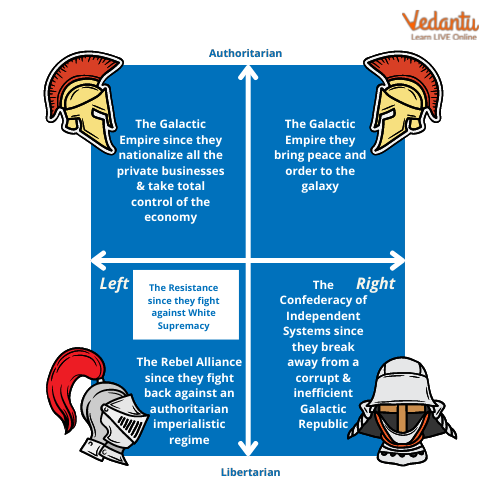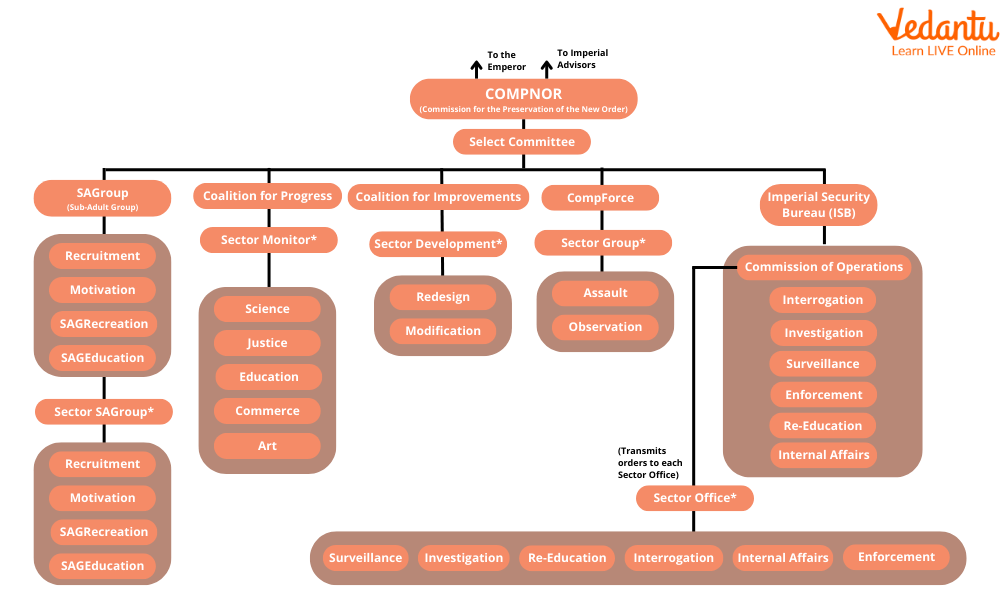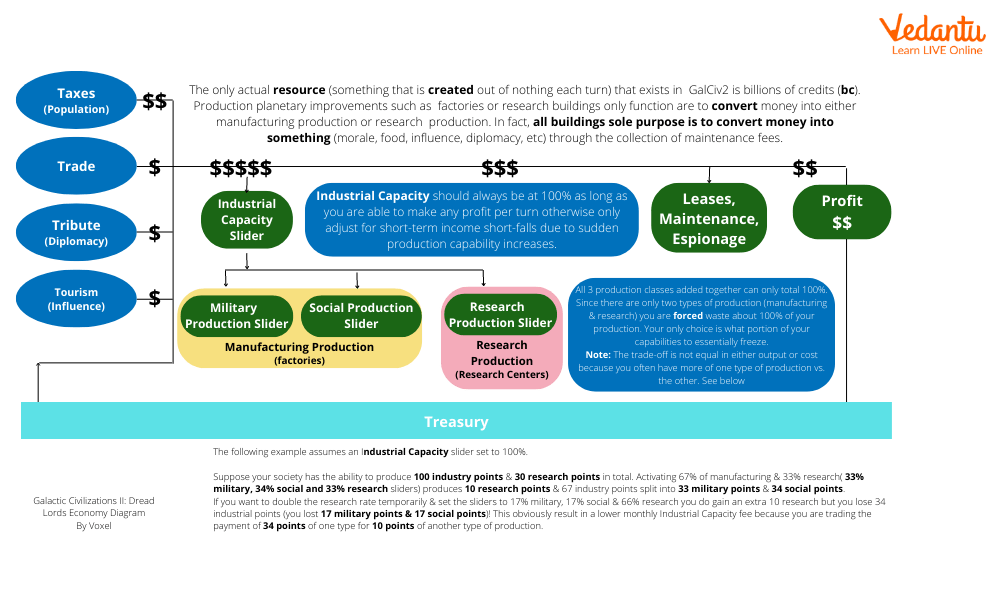




An Overview of the Galactic Empire
A fictional despotism that appears in the Star Wars series is called the Galactic Empire. It debuted in the 1977 film Star Wars and can be seen in its follow-ups. The Galactic Empire is a tyrannical, dictatorial government with a convoluted bureaucracy that strives to establish absolute rule and social control over every planet and civilisation in the galaxy.
Furthermore, the economic and political framework of the Star Wars series is based on actual historical events. However, there are moments when the Galactic Empire's economic policies seem just as perplexing as the Force's workings. How is the Empire paying for the production and deployment of fresh fleets of Star Destroyers and planet-destroying super lasers like the Death Star without a galaxy full of tax-paying citizens? Let's examine how the economy functions under the empire of war.

Fractions in the Galactic Empire
The Economic System of the Galactic Empire

Structure of the Galactic Empire
In the immediate aftermath of the Clone Wars, the Galactic Empire implemented a planned economy in which the production and distribution of products were centralised and controlled. This policy was known as imperialisation.
The majority of the Empire's land and space-based vehicles were produced by prominent loyalist firms Kuat Drive Yards and Sienar Fleet Systems, even though many third-party organisations were still allowed to exist. Things that demonstrate how the galactic economy works include the following:
Due to the policy of imperialism, the decision-making powers were centralised.
Many planets concentrate their economies at the planetary level to compete in the galactic economy. While other less fortunate planets would succeed through planetary scale economies, planets having valuable natural resources would concentrate on exporting them.
Planetary climates were significantly impacted by the extensive use of grain fields, droid and engineering facilities, and mineral mining over entire planetary surfaces.
The Empire interacted with criminal organisations on a high level and even maintained strong ties with them.
The Empire seized control of numerous significant organisations.
Slavery continued to be practised despite being made illegal by the Republic under the Galactic Constitution in lawless regions like the Outer Rim and even covertly in regions closer to the more developed Core.
Components of the Galactic Economy

Various Components of the Galatalic Economy
After the Battle of Endor, which marked the conclusion of Episode VI: Return of the Jedi, the Galactic Empire of the Empire Star Wars Universe was brought to life, lay in ashes. Let's look at some of the main components which made up the Galactic Economy before its destruction:
Trade - Interplanetary trade was at the centre of the Galactic economy in the Empire star wars. Planetary trade may be able to sustain a local economy, but in many situations, interplanetary exports would be necessary to support the sophisticated societies' highly complex economies and enormous scales of trade.
Transportation - The main means of both civilian and military transit was a huge transportation network that connected Palpatine's vast Empire. Since well before the time of the previous Galactic Republic, there have been many main hyperspace channels that have been used for interstellar trade and warfare. These lanes are regarded as trans-galactic highways.
Currency - In the galaxy, many different currencies were in use. A planetary economy frequently uses a variety of currencies, such as planetary credits, credits from a significant sector power, or credits from the galactic government. Despite this Republic and the Empire support the use of galactic credits.
Although galactic governments were known to make commemorative metal coins, such as the Desired or the Victory Tax Credit, they were not frequently utilised as local currency.
Taxation - All creatures that received a salary were obligated by Republic law to pay income tax. The Republic Tax Collection Agency was in charge of collecting this tax. The Republic Senate passed a tariff on the once free trade zones after the Trade Federation complained about piracy in the remote star systems. The Trade Federation Viceroy was rightfully incensed by this behaviour, which prompted him to invade and blockade the little planet of Naboo.
Case Study
The Empire under Palpatine was highly ineffective. Moffs and Imperial institutions would compete with one another for influence and power, which prevented most common citizens from taking full advantage of the Empire's scale advantage.
The Empire could care less about the common people and more about the war's wealth. Many internal power struggles occurred at such a high level that it's questionable whether this disrupted the majority of daily Imperial life. In comparison to the Republic era, the scale advantages that the Empire did provide could have at the very least helped to lessen the economic impact of Imperial stupidity.
1. What were the advantages of being an average citizen of the Galactic Empire in the Empire star wars universe?
Ans: Some advantages of being an average citizen of the Galactic Empire in the Empire star wars universe are:
Broadcasts and communication systems are nearly accessible to everyone thanks to standardised communication arrays.
Taxes were high, but with the reinstatement of a free-roaming Imperial Navy, invasions and general piracy were tackled and, in some cases, eliminated as problems depending on whether the globe in question was held by a Military Governor or a sizable garrison of troops.
Agriculture and farms were in a thriving condition. It was necessary to supply the enormous military apparatus. However, a benefit was that the people themselves were permitted to retain enough on hand to feed their families, employees, and in some larger businesses, the community as a whole.
All physically capable people were compelled to enlist in, support, and serve the Galactic Empire. As a result, individuals received the training and education they needed to flourish in their employment and even pursue other careers if they desired.
Summary
A made-up dictatorship that appears in the Star Wars series is called the Galactic Empire. The goal of the Galactic Empire, an authoritarian, autocratic government with a convoluted bureaucracy, is to secure one-party rule and social control over every planet and civilisation in the cosmos. Like the modern economy, the Galactic economy was made up of sectoral, systemic, and planetary production, consumption, and trade.
The Empire implemented the imperialistic policy, which resulted in the centralisation of powers along with some implications like slavery and the seizing of many big corporations. The major components of the economic system of the Galactic Empire include trade, transportation, currency, and taxation.
FAQs on The Economic Concepts of the Galactic Empire: Star Wars Insights
1. What is the basic economic structure of the Galactic Empire in Star Wars?
The Galactic Empire's economy was a vast, interconnected system built upon interplanetary trade. While individual planets had local economies, advanced society and large-scale growth were funded by exporting specialized goods across the galaxy. This created a core-periphery structure, with wealthy, industrialised Core Worlds and less-developed Outer Rim territories that often supplied raw materials. The entire system was unified by a standard currency, the Galactic Credit Standard.
2. How did technologies like the hyperdrive shape the galactic economy?
The hyperdrive was the cornerstone of the galactic economy. By allowing starships to travel faster than light through hyperspace, it was the key technology that facilitated interstellar commerce on a massive scale. Its primary economic roles included:
Connecting Markets: It physically connected thousands of planets, turning them into a single, galaxy-wide marketplace.
Enabling Specialisation: Planets could focus on producing goods they were best at (e.g., agriculture, mining, manufacturing) and trade for everything else, increasing overall economic efficiency.
Centralised Control: It allowed the Empire to project economic and military power, control trade routes, and collect taxes from across the galaxy.
3. What kind of economic system did the Galactic Empire operate under?
The Galactic Empire operated under a mixed economic system, but one that leaned heavily towards a command economy. While private enterprise and massive corporations existed, the Emperor held ultimate authority. Key industries, such as weapons manufacturing and shipbuilding, were effectively nationalised to serve the Imperial military. The Empire dictated production quotas, controlled strategic resources, and used its power to dissolve unions and guilds that opposed its agenda, prioritising military power and political control over free-market principles.
4. What was the role of large corporations and financial institutions in the Empire?
Large corporations and conglomerates held significant influence, but their power was subordinate to the Emperor's will. Many powerful entities from the Old Republic, such as the Trade Federation and Commerce Guilds, were absorbed or reorganised into the Imperial structure. The Empire established the Corporate Sector Authority, a vast region of space governed by a coalition of businesses, to efficiently manage resources for its benefit. While local banks and markets existed, major financial control was centralised, ensuring that corporate activities aligned with the Empire's military and political goals.
5. How did the Empire's authoritarian ideology influence its economic policies?
The Empire's ideology of absolute power, order, and control directly shaped its economic policies. This was demonstrated through the nationalisation of key resources for the war machine, the imposition of heavy taxes to fund its massive military, and the use of economic sanctions or blockades to punish defiant worlds. The economy was not just for generating wealth; it was a primary tool for social control and enforcing loyalty, reflecting a system where political ideology dictated economic activity.
6. What were the major economic differences between the Galactic Empire and the Old Republic?
The primary economic difference was the level of state intervention. The Old Republic, while corrupt, had a more laissez-faire approach where powerful corporations and trade guilds often operated with significant autonomy, sometimes even challenging the central government. In contrast, the Galactic Empire enforced a rigid, top-down control. It dismantled or subjugated independent guilds, seized control of vital trade routes, and created a massive military-industrial complex where the economy's main purpose was to serve the state, not the other way around.
7. What does the construction of the Death Star reveal about the Empire's approach to public finance and resource allocation?
The Death Star project is a prime example of the Empire's economic priorities and immense power. It highlights several key economic concepts:
Massive Public Spending: It represented an astronomical investment of public funds and resources, directed entirely toward a military project.
Opportunity Cost: The quadrillions of credits and vast amounts of material and labour spent on the Death Star could have been used for infrastructure, healthcare, or consumer goods. Its construction represents the ultimate trade-off between military power and citizen welfare.
Central Planning: Only a command-style economy with the ability to expropriate resources and direct labour on a galactic scale could undertake such a monumental project.
8. Why was having a standardized currency like the Galactic Credit essential for the Empire's economy?
A standardized currency like the Galactic Credit Standard was essential for several reasons fundamental to a large-scale economy. Firstly, it served as a universal medium of exchange, drastically reducing the complexity and costs of bartering between thousands of different planetary systems. Secondly, it provided a stable unit of account, making it easier to price goods, record debts, and calculate taxes across the galaxy. Finally, it was a powerful symbol of Imperial authority, reinforcing economic and political unity under a single, centralised power.























